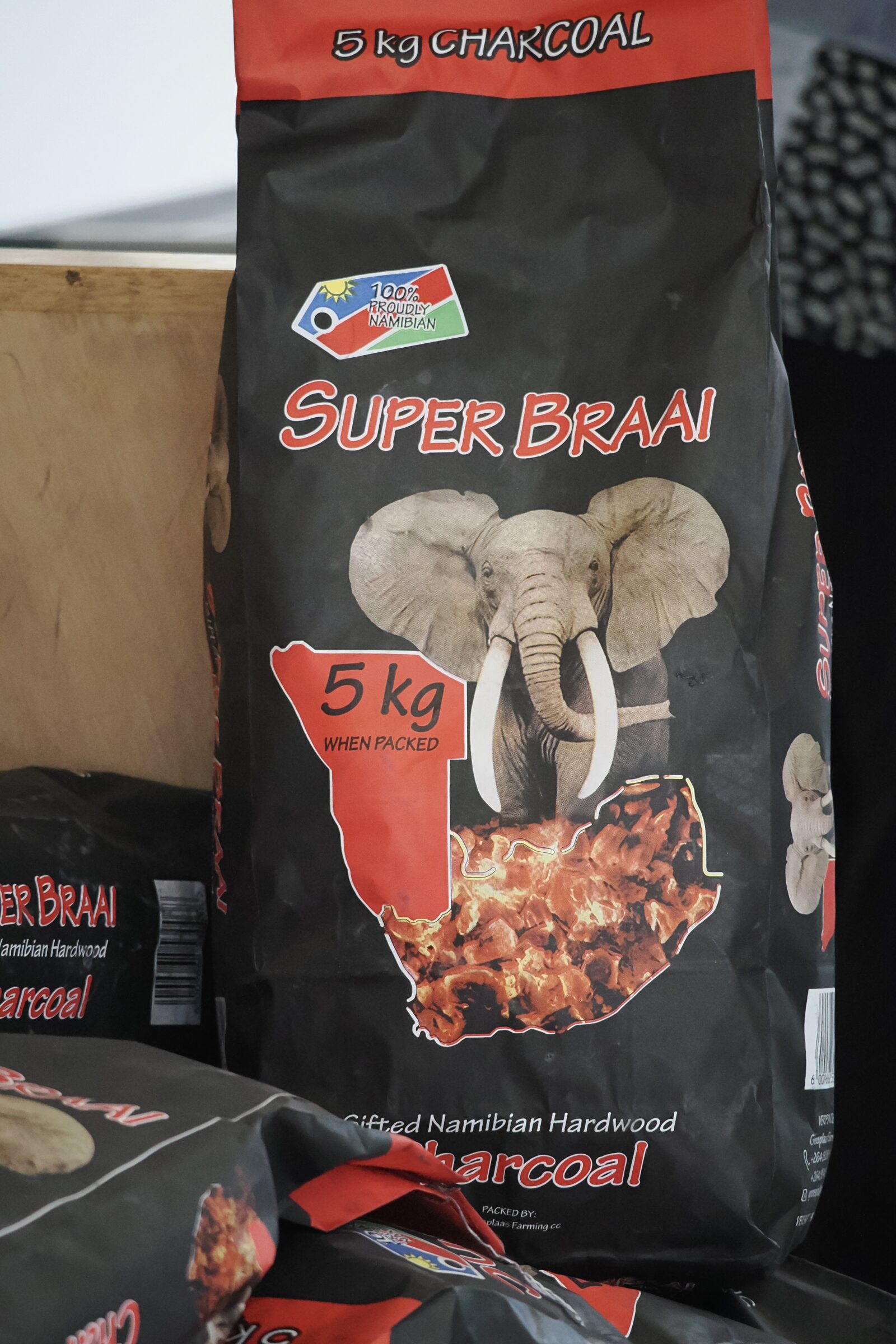A Wikipedia list of 182 counties, ranked by average annual precipitation, has Colombia allegedly wettest and Egypt driest – respectively, 3,240 mm and 18 mm.
155 nations are allegedly “wetter” than Namibia; its reported annual average of 285 mm is a little more than half of the figure given for nation #141 – Australia.
Yet Namibian-harvested hardwood is the basis for an industry which currently yields more than 70 million Australian dollars worth of annual export income…and that figure is set to soar.
It has nothing to do with construction timbers or wooden furniture.
By 2022 Namibia had become one of the “big 5” in the global market for charcoal, most especially the “premium” kind so highly prized by those whose favourite social occasion/ meal is a barbecue/bbq/barbie/braai. (”braai” is the southern African term, and southern Africans are every bit as passionate/expert/competitive as are southern U.S. Americans when engaged in open-air cooking over coals)
Supporters, including Namibia’s government, see this industry a a “win-win” – not merely sustainable, but environmentally beneficial, with great potential for further expansion, and employment for many Namibians.
Opponents see it as an environmental threat, as dangerous to its workers’ health, and as an example of “greenwash”, backed by pseudoscience.
The “acacias”/ thorn trees which are a signature feature of many drier African landscapes have become a “big problem” in Namibia…and thorn trees’ hard wood is ideal for charcoal production.
In recent years thorn trees have increasingly been “taking over”, their ever-more “impenetrable” thickets “crowding out” what used to be grasslands or lightly-treed, open savanna.
Arguably, they need to be “thinned out”; “choked” land ought be “de-bushed” so that it can once again become more “productive”, from a beef-cattle-producing and/or from a wildlife/wildlife-tourism point of view.
But didn’t the thorn bush problem in large part happen because of over-grazing by beef cattle?
And wouldn’t elimination of the thorn trees make the soils more impoverished than they were before the cattle overgrazed them, and thereby allowed the thorn trees to run riot?
And what if greedy, “bottom line”-chasing charcoal entrepreneurs use chemicals to kill thorn trees, and eradicate them rather than selectively thin them?
And what about the potential ill-effects on workers who could be poisoned by herbicides and/or by poorly-ventilated charcoal burning techniques?
There are many different ways of dealing with “problem” thorn trees; “de-bushing” can mean selective thinning, with no chemicals involved, followed by ongoing, careful management of the selectively-thinned country…or it can mean “poison everything, make a one-off profit by flogging the maybe-contaminated charcoal, then bring in lots of cattle”.
Q: in a land in which various forms of corruption are abundantly evident, how can charcoal buyers/aid donors/supporters of “sustainability”/ those who like to think that “natural” is best (but who have never thought through what exactly “natural” means, let alone what “best” is, in specific, particular, “foreign” contexts) – and the proverbial Uncle Tom Cobbley and all – ever even know what is is really “going on” in what some well-intentioned people see as an actually-admirable or potentially-admirable industry for Namibia, whilst other well-intentioned people see the very same industry as shonky-and-destructive-by-definition?
A: I don’t know…but I suspect that it would be unwise to leap to/adhere to any unshakable conviction that Namibia’s charcoal industry (and ditto any form of so-called “de-bushing” in Namibia) is intrinsically/necessarily either a “good” or a “bad” thing.
Most of what is readily available online on the subject comes from “lobbyists for” or “lobbyists against”, rather than from credible independent researchers.
Click here for a not-utterly-partisan perspective.
Australians would do well to remember that much of Australia’s so-called “natural” land/scape, pre-1788, was in fact a land/scape that humans had meticulously, sustainably “managed” – interfered with – for at least 60,000 years.
